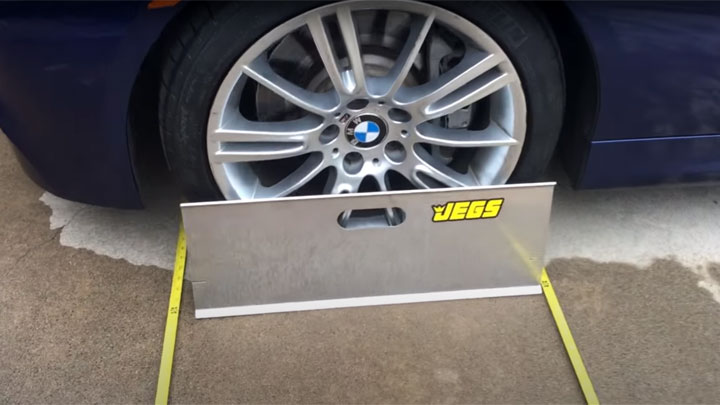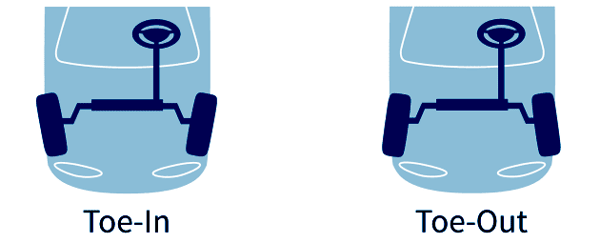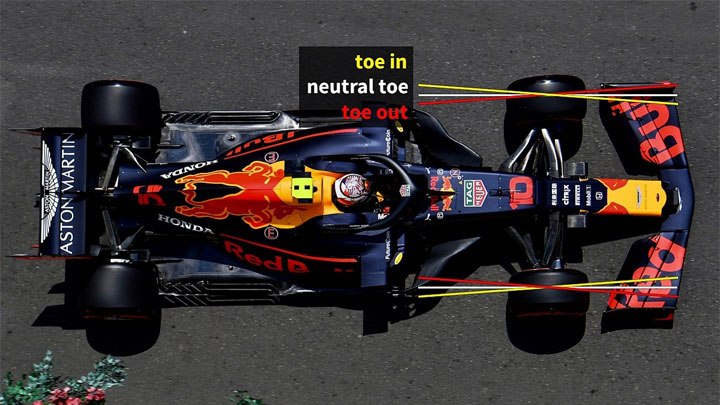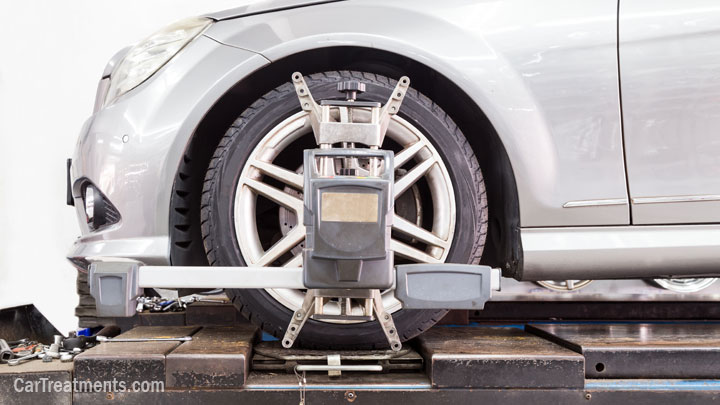What is Toe? (Toe-In vs. Toe-Out Effects)
Ever wondered what your mechanic means when they say your wheels need an alignment to fix the toe? The toe angle of your wheels can greatly impact your vehicle’s handling, tire wear, and even fuel economy.
This article explains what toe is, the difference between toe-in and toe-out and their effects, and how this critical alignment parameter is adjusted.

What Is Toe On a Car?
Toe, or tracking, is when a car’s wheels point to the right or left side in an asymmetric angle. Toe-in, also known as positive toe, refers to front of the wheels tilting towards the centerline of a vehicle, while toe-out, or negative toe, is when the front of the wheels tilt outwards.
Toe is one of the three major alignment configuration parameters in a car. It is a basic setting that has a considerable impact on a car’s directional stability and tire wearing angle. It also changes according to a vehicle’s speed.

Tracking is expressed in fractions of an inch or degrees and is used to adjust vehicle handling and suspension of the bushing, and to prolong tire lifespan.
Among the significant signs of poor alignment is when the tread is flat on one side and sharp on the other, or potentially also an unstable and noisy steering wheel.
What About Camber and Caster?
Ultimately, the right balance of toe, camber, or caster increases your vehicle’s performance and extends the lifespan of your car’s tires, brakes, and suspension.
The suspension of a car is measured in three ways, and on different axes. Each of these measurements affects the others, so if you change one of the angles, you should immediately re-measure the others and check the suspension components.
Toe is the point of the front tires when a vehicle is viewed from above. “Toe-in” refers to the leading edge of the tires turned in towards the car’s center, as if the vehicle were “pigeon-toed”. “Toe-out” applies to tires pointed outward away from the center of the car.
Camber affects tire wear and the handling of the car. Most vehicles have a slight negative camber, but in some cases, a positive camber is more suitable.
Finally, the caster measures the lower pivot position relative to the upper pivot position, also known as the angle of the steering axis. This angle affects the steering stability when your vehicle is traveling in a straight line.
Toe-In Effects

Toe-in (positive toe) effects are mostly provided for rear-wheel drive cars, trucks, and SUVs, as this offers better straight line stability. The downside is that turning response is a bit more sluggish.
When navigating a sharp corner, toe-in changes to toe out to reduce tire scrub, because the inside wheel turns through a small interval compared to the outside wheel.
The majority of rear-wheel-drive cars use positive toe-in to enable tires to move appropriately and to make up for rearward movement caused by tire rolling resistance.
When a vehicle has a lot of toe ins, the outside edges of the tires wear out quickly; thus, toe-in is only required in a small amount to enable the vehicle to gain more stability and compensate for slight changes in geometry and suspension height.
Toe-Out Effects
Toe-out (negative toe) effects are mostly found in race cars as the vehicles require a very responsive steering system. Whether you attend an event at a small local racetrack or the Nurburgring, many cars will be set up with some toe-out.
The majority of four-wheel drive cars are fitted with toe-out systems that help with a quick and more effortless steering response.
Toe-out setting on front-wheel drive vehicles makes the front tires stronger and increases grip, which helps with acceleration. However, the tire span decreases due to increased pressure on the rubber.
When a car is about to move or is navigating a rough road, front-toe wheels help the vehicle to achieve directional stability. They offer a natural steering wheel stability when the driver is about to take a turn.
Front-wheel drive vehicles use negative toe-out to avoid forward movement and enable tires to move side by side at a relatively good speed.
Excess toe-out can cause the inside edges of tires to wear out quickly, braking issues, and understeer issues.
How Is Toe Adjusted?

Toe-in and toe-out mostly affect the steering geometry and tire lifespan in vehicles.
Since there are different car models, the toe is adjustable on the front wheels and in the back wheels in some cars. For vehicles that are not adjustable on the rear, the mechanic will place an instrument on all four wheels to check the toe and tracking and make adjustments from the front wheel.
An incorrect toe setting will lead to a wrong thrust angle, a vehicle’s difficulty in turning or taking sharp corners, and problems with straight-line stability at high speed.
The thrust angle is defined as an imaginary line drawn perpendicularly from the rear to the axle’s centerline. It compares and confirms that the rear axle is parallel to the front axle and that both sides of the wheelbase are equal.
Before adjusting toe settings to manipulate handling, keep in mind that toe settings will tamper with your car’s drivability, especially during wetter and colder months. Additionally, excessive toe adjusting can make your vehicle loose stability while you drive on rough roads or when passing through puddles.
Related: Average Wheel Alignment Cost
Toe-in and toe-out differ when it comes to the type of vehicle. Passenger vehicles are the most likely to have a toe in (positive toe) setting – focusing more on straight-line stability. Besides, steering control is mostly considered in race cars fitted with a toe-out (negative toe) setting.
We hope this article has adequately answered the question, “What is toe?”
Whether you are a driver that prefers a small amount of toe-in or toe-out, it is essential to note that a slight or improper toe adjustment will cost you uneven tire wear within a short while.
Ensure that your car’s toe alignment is done regularly and correctly by a qualified and experienced auto repair shop to guarantee you enjoy smooth rides and safe driving.
- Replace the Engine or Replace the Car? (11 Factors to Consider) - Apr 11, 2024
- Plastic Piece Dragging Under Your Car? (What It Is and What To Do) - Mar 21, 2024
- Timing Belt vs Timing Chain (What’s the Difference?) - Feb 27, 2024
